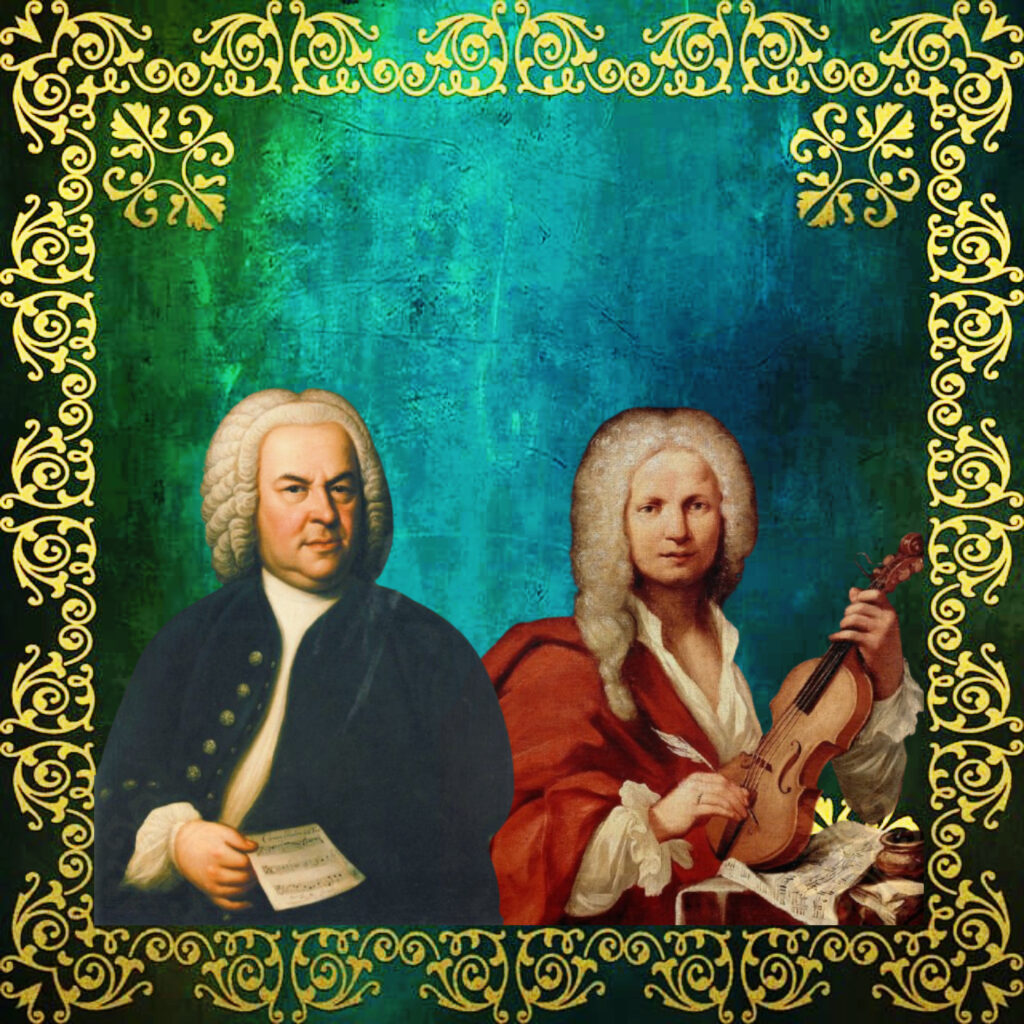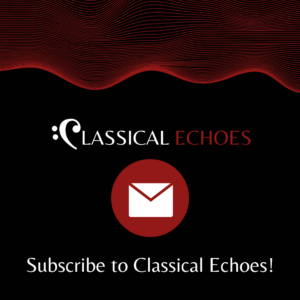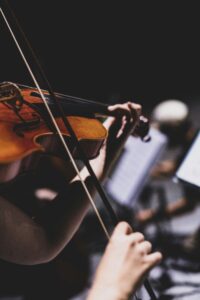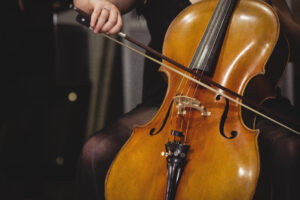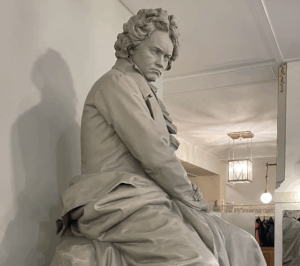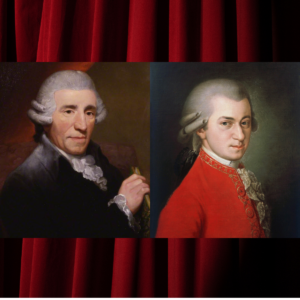The best Baroque music – what did the era of kings and fancy palaces sound like
Baroque music is often overlooked, with more attention given to the Classical and Romantic eras. However, the music of this period goes far beyond famous names like Bach, Handel, and Vivaldi.
This era spanned nearly 150 years, lasting from around 1600 to 1750 – about 70 years longer than the Romantic era and almost 50 years longer than the Classical period. It was a time of great innovation, with composers from across Europe experimenting with their music.
Baroque music changed significantly, becoming more complex and expressive, and finally began to evolve as a separate style of art. It saw the birth of opera, the rise of counterpoint techniques and the development of many musical forms.
While some names like Corelli, Scarlatti, and Monteverdi may not be as popular today, their contributions are crucial to all future music.
Nevertheless, there is definitely much to explore in Baroque music, as some of the greatest and most beloved musical pieces today came from this period. Without further ado, here’s the best Baroque music!
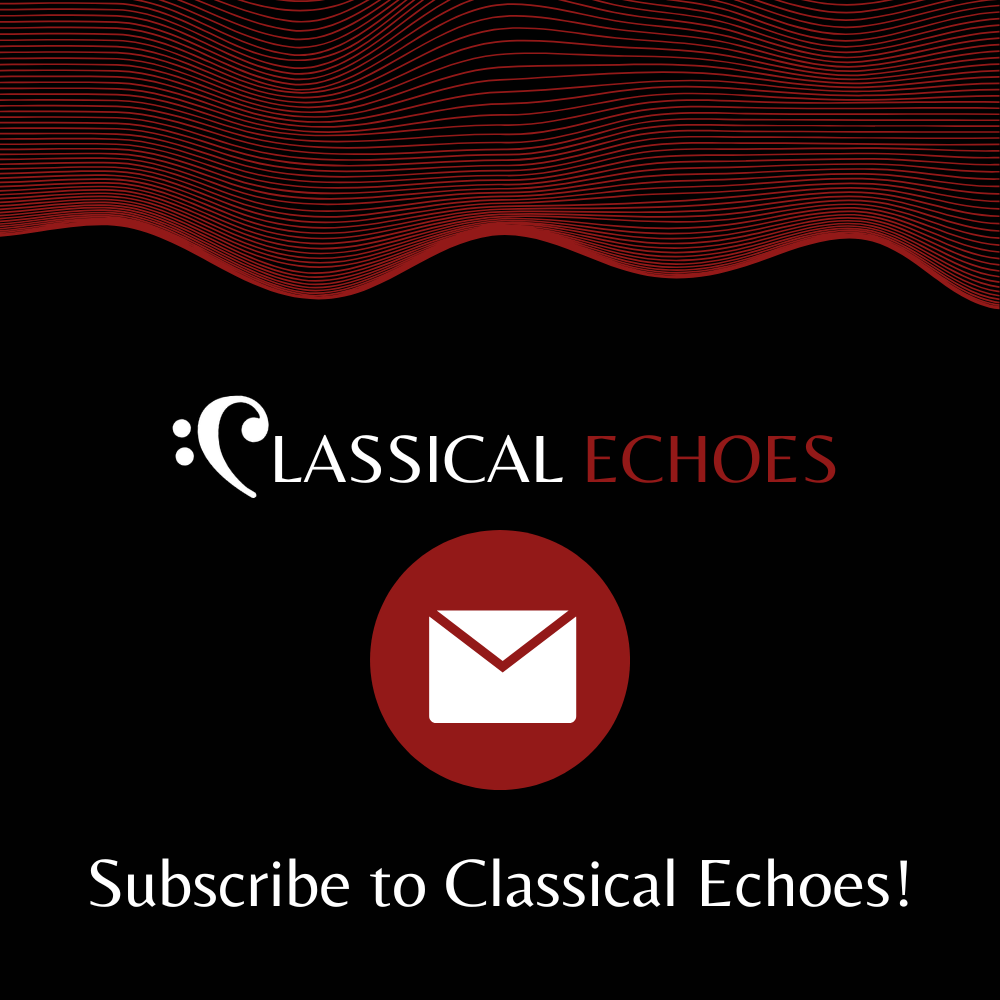
Subscribe to Classical Echoes Newsletter!

Subscribe to Classical Echoes Newsletter!
14. G. Handel – Messiah
“Hallelujah” isn’t just a meme song for depicting joy in movies but a part of a larger work by Handel. Messiah is one of George Frideric Handel’s most famous works. It is an oratorio written in 1741 and completed in just 24 days.
This piece particularly showcases Handel’s absolute determination in his work and his musical talent. The text by Charles Jennens is based on biblical stories, focusing on the life of Jesus Christ, the Messiah.
Messiah premiered in Dublin in 1742 as a charity performance. The “Hallelujah Chorus” became the most well-known section, often performed as a separate piece.
Interestingly, it is customary for listeners to stand during this chorus, a tradition that is said to have started when King George II rose during a performance.
Messiah became one of the cornerstones of Baroque music. Beethoven once said, “Handel is the greatest composer that ever lived. I would uncover my head and kneel at his tomb.” Overall, it is now often performed during Easter and church masses.
Hallelujah from Messiah (yt. Royal Choral Society)
13. H. Purcell – Dido and Aenas
Henry Purcell’s Dido and Aeneas is a cornerstone of English opera, first performed in 1689. It tells the tragic story of Dido, Queen of Carthage, and her love for the Trojan hero Aeneas.
Based on Virgil’s Aeneid, the opera combines expressive arias and musical parts with an intense scenes and plot. Purcell’s Dido and Aeneas is especially famous for Dido’s lament, “When I am laid in earth”.
The opera is considered one of the earliest examples of a fully sung English opera and remains one of the most important works of Baroque music.
Purcell himself was the most successful English composer of all time, having a profound impact on church music and opera. Despite his short life – he died at 36 – he had a significant influence on all future British composers.
Another famous English composer, Benjamin Britten, called Purcell “the greatest genius England has ever had.” Overall, Purcell was one of the most significant composers of the Baroque era and the creator of some of the best Baroque music. He influenced not only English culture but also all of European music.
“When I’m laid in Earth” – Dido’s Lament (yt. koldfish)
12. J. S. Bach – Toccata and Fugue in D minor
The “Dracula theme,” or more precisely Toccata and Fugue in D minor, is definitely one of Johann Sebastian Bach’s most famous works. Its dramatic Toccata section and powerful opening have made it one of the darkest and most mysterious Baroque pieces.
However, many details about the piece remain unclear. Scholars are unsure when Bach wrote it, and some even question whether he is the original composer, which adds to its mystery.
The work is written for organ and is divided into two sections: the Toccata, which showcases technical skill and improvisation, and the Fugue, which develops a complex musical theme. Its dark tone and intensity have made it famous in films and pop culture.
Some musicologists believe the Toccata and Fugue in D minor may have been written between 1703 and 1750, possibly while Bach was working in Arnstadt. Others suggest it could have been a transcription of a violin piece or incorrectly attributed to Bach. Like many of Bach’s works, it remained unknown until the 19th century, and there are no earlier documents about the Toccata and Fugue in D minor.
Hans-André Stamm plays Toccata and Fugue in D minor
11. G. Telemann – Viola Concerto in G Major
One of his most famous pieces, the Concerto for Viola in G Major, is one of the earliest known viola concertos. Written in the late Baroque style, it became famous for its rhythmical and melodic ornamentation. The concerto consists of four movements: Largo, Allegro, Andante, and Presto, which is a common structure for concertos of that time.
Telemann often combines styles from different regions in his music, like French elegance, Italian virtuosity, and German counterpoint. The Viola Concerto in G Major is a perfect example of this quality of Telemann’s music.
It is no wonder that he was a friend of many top-tier European composers of the epoch, including J.S. Bach. In fact, he was the godfather of Bach’s second son, Carl Philipp Emanuel Bach, who later became known as the “second Bach” and one of the greatest classical composers.
Midwest Young Artists Conservatory – Telenann’s Viola Concerto
10. G. Handel – Water Music
Quite a strange and informal title for Baroque music, huh? Handel’s Water Music became one of his most famous orchestral works. It was composed in 1717 for King George I and performed during his royal boat party on the River Thames.
It is a collection of three different suites, all in different keys: F major – D major – G major. Each suite consists of different musical styles, like minuets and overtures.
Despite being intended to be performed literally on the water from a boat, Handel wrote it for a large orchestra, including trumpets, bassoons, horns, and strings.
In the early 20th century, English composer Hamilton Harty made an arrangement for a modern orchestra, changing the original orchestration by Handel in some parts, giving the piece a new breath.
Even though Water Music may look like just an ordinary work to gain the King’s favor, Handel, surprisingly, actually put heart and soul into his work. It is now considered one of his best works and overall one of the best Baroque music.
Hornpipe – Handel’s Water Music (yt. Voices of Music)
9. J. S. Bach – Well Tempered Clavier
One of the first major works fully dedicated to the keyboard instruments (claviers), the first book was published by Bach in 1722 and includes 24 pairs of preludes and fugues in all different keys. The main purpose of it was to ‘well-temper’ the clavier for different tones, as well as teach different playing techniques.
People usually don’t comprehend the value of this masterpiece besides being a study guide for piano students. Like with many of Bach’s works, the WTC is not just a collection of preludes and fugues but a much more complex and interesting creation.
As long as you really try to listen and be moved by every note, you begin to see this as a whole story. When viewed as an unified work, the preludes and fugues begin to make common sense.
Some scholars believe that WTC tells stories from the New Testament, depicting episodes from Jesus’ life, as Bach himself was a deeply religious person and wrote music “for God only.” Even Beethoven once called it a “musical Bible.”
Twenty years later, Bach published a second part, WTC II, also consisting of 24 preludes and fugues in all different keys. Both of them were not fully appreciated during Bach’s time and were later rediscovered by the next generation of great composers like Mozart, Beethoven, and Chopin.
G. Gould plays Fugue in E major from WTC II (yt. cmtmusik)
8. A. Vivaldi – Concerto for 2 Violins in A minor
Besides The Four Seasons, Vivaldi wrote many attention-worthy works, some of which are astonishing in terms of beauty and sound. One of these is the Concerto for Two Violins in A Minor, which is part of Vivaldi’s collection Il cimento dell’armonia e dell’inventione (The Contest Between Harmony and Invention).
This concerto shows Vivaldi’s intention to build a dialogue between two violins, accompanied by a Baroque orchestra. He composed it in the early 18th century, and the concerto is now one of the most remarkable examples of Italian Baroque.
The concerto is structured in three movements: fast (Allegro), slow (Largo), and fast (Allegro), a typical Baroque concerto form. Even though the first movement is titled Allegro, it’s quite melancholic and builds up a more complex counterpoint melody, unlike the fierce recap in the third movement.
The violin concerto was so well-received that it gained attention from other composers. Bach even transcribed it, along with other Vivaldi works, for organ, which, to be honest, aren’t as mesmerizing and charming as Vivaldi’s original version.
Vivaldi, known as the “Red Priest” due to his red hair and clerical background, composed over 500 concertos and other pieces, mainly for violin, that are often overlooked nowadays. However, the Concerto for Two Violins is a treasure among them. I highly recommend starting with this work to explore Baroque music!
A. Vivaldi – Concerto for 2 Violins in A minor (yt. Cherokee Rose Productions)
7. D. Scralatti – Sonatas
Here’s the thing: Baroque music was different from Classical not only in its core ideas and musical instruments involved but also in its musical forms. While some genres, like concertos or suites, continued to evolve during Classical era, many new forms, like symphonies and sonatas, were actually founded during the Baroque period.
One of the most crucial musical forms, the sonata, was developed by Domenico Scarlatti (1685–1757), an Italian composer and virtuoso harpsichordist. He was born in Naples, Southern Italy, and was the son of Alessandro Scarlatti, a prominent composer of the Baroque period. Domenico wrote 555 sonatas for clavier during his lifetime.
Of course, Scarlatti’s sonatas were not even closely compared by their sizes and significance to Mozart’s or Beethoven’s ones; however, they already included key ideas of the sonata form. Scarlatti’s sonatas are usually 3–5 minutes long but differ a lot from, for example, Bach’s or Handel’s piano pieces and have a different structure.
Scarlatti has influenced a separate form of music that brakes the Baroque standards, making its rhythmical structure and development of the main theme unique. This gave a significant impact on a new generation of Classical composers, which were developing new musical forms set back by Baroque composers.
Notable pianist and composer V. Horowitz once said, “Scarlatti was a revolutionary composer who gave the harpsichord its voice. His works are full of fantasy and beauty.” Scarlatti gave the Baroque music a new meaning and became famous as a harpsichordist and prominent composer of the Baroque era.
M. Argerich performs Scarlatti’s Sonata in D minor K. 141 (yt. musiklog)
6. A. Corelli – Concerti Grossi, Op. 6
Another outstanding Italian Baroque composer, Arcangelo Corelli, is the author of many orchestral works and known as the “Father of the Concerto Grosso.” A concerto grosso (Italian – big) combines a group of instruments accompanied by an orchestra, unlike a simple concerto that features a soloist.
Corelli’s “Concerti Grossi, Op. 6” is one of his most exceptional collections, consisting of 12 concertos published posthumously in 1714. These works build a dialogue between a small group of soloists (the concertino) and a larger ensemble (the ripieno). This more complex and expressive form then became very popular among Baroque composers, especially Italian ones.
Another notable aspect of Corelli is how he creates a mood for the piece and evokes feelings in the listener. Music historian Charles Burney said, “Corelli’s works are the pillar upon which much of modern music rests.”
Although Corelli wasn’t as prolific as Bach or Telemann, publishing only six collections of concertos, he was an excellent teacher as well. He was a virtuosic violinist and had many pupils, some of whom, like Francesco Geminiani, continued Corelli’s traditions.
Overall, Corelli for Baroque is like Haydn for classical music: his music is the first to come to mind when thinking about how Baroque music should sound. He is one of the best composers to start exploring Baroque music from.
A. Corelli – Concerto Grosso op. 6 no. 8 in G minor (yt. hr-Sinfonieorchester)
5. J. Rameau – Nouvelles Suites de Pièces de Clavecin
Rameau, along with Lully and Couperin, was a prominent French Baroque composer and one of the most innovative across Europe. He built his career by revolutionizing harpsichord, its playing techniques and sound.
One of his harpsichord works, Nouvelles Suites de Pièces de Clavecin (New Suites of Harpsichord Pieces), consists of two suites, one in A minor and the other in G major. It was published in 1728 and became a breakthrough because of its innovative nature and musical style.
In this work, Rameau aimed to breathe life into the sound and depict landscapes or various creatures with it. Known as a character piece, this was a popular musical form in the late Baroque era, mainly used to represent an image or a character.
One of the movements in Nouvelles Suites de Pièces de Clavecin, Les Cyclopes (Cyclops), portrays these mythical creatures. Their power and mystery are shown through rapid scales and arpeggios in the piece.
Rameau, unlike his colleagues, published his major works in his 40s and became one of the most innovative musical theorists and composers of the French Baroque. Overall, his example shows that it’s never too late to start pursuing your passion and exploring your talents.
G. Sokolov plays Les Cyclopes by Rameau (yt. Deutsche Grammophon – DG)
4. J. S. Bach – Goldberg Variations
“A monument of the keyboard,” described G. Gould of Bach’s Goldberg Variations, one of the cornerstones piano music. The Goldberg Variations is one of the major works of Bach’s late period. It was completed in 1741 and consists of an Aria, followed by 30 variations in different musical forms.
Due to a common misconception, Bach actually was the original author of the main theme of the piece. The work was named after Johann Gottlieb Goldberg, who first performed it. The idea of the variations occurred thanks to Count Keyserlingk, an ambassador who was experiencing insomnia.
The count was very soothed by Bach’s gentle harpsichord melodies. Bach became obsessed with the idea of music with calm and relaxing tones to help listeners reduce their stress levels.
Even though it was intended as some sort of ‘lullaby’, it is Bach’s hardest keyboard work. In terms of music, it is often seen as Bach’s most genius work for piano. The peaceful Aria in the introduction is then followed by different parts in sound and mood, like minuets, fugues, and canons.
Every third variation is written as a canon, each at an increasing interval (unison, second, third, and so on), demonstrating Bach’s mastery of counterpoint. The last variation, Quodlibet, is based on folk tunes, which Bach, however, converts into musical perfection. The Variations are now considered a key turning point in piano music.
G. Gould, Aria from Goldberg Variations (yt. kanfoosj)
3. J.S. Bach – Harpsichord Concerto in D minor
This is one of the most powerful and mesmerizing compositions of the Baroque era. Bach’s harpsichord concerto in D minor is the first of his collection of Op. 1052 and the most thrilling of all.
Despite it being often referred to as a piano concerto, this is not exactly what Bach intended for this work. Bach himself wasn’t a big fan of early piano, as they were very different from today’s and he personally preferred harpsichords.
The most famous part, the first movement, is a furious and cold-blooded harmonic masterpiece, where the allegro keyboard theme is accompanied by a dramatic orchestra. Here, Bach builds up a hypnotic theme in the dark tone of D minor, possibly influenced by Italian Baroque and its expressiveness.
It is believed, though, that Bach’s concerto in D minor for harpsichord is based on another work that is considered lost today. It was likely a violin concerto he wrote in the 1720s, but later transcribed for keyboard.
Generally speaking, Bach’s harpsichord concerto in D minor is an exceptional creation in terms of rhythmic structure and musical intensity. I highly recommend listening to the harpsichord version instead of the piano to fully experience its greatness!
Bach Harpsichord concerto op. 1052 no.1 in D minor (yt. hr-Sinfonieorchester)
2. A. Vivaldi – The Four Seasons
Ahh, yeah, you knew the Four Seasons will be in this list. This is one of the most iconic and memorable works in music and probably the most famous Baroque piece. Vivaldi composed it in 1723, but after his death, the work was almost forgotten until the 20th century.
The Four Seasons is written as a violin concerto from the previously mentioned collection Il cimento dell’armonia e dell’inventione (The Contest Between Harmony and Invention). Each movement represents a season, starting with Spring (E major) and ending with Winter (F minor).
Generally speaking, it is a concertos within concerto, with each ‘season’ divided into three movements. Of course, this is not the only interesting aspect of the work, as it is truly one of the most unique Baroque pieces.
The Four Seasons is one of the earliest examples of so-called programmatic music, which aims to tell a story or depict an image. Vivaldi uses notes on the score, such as “Lethargy caused by the cold” to describe how the music should feel.
This work resonated in the musical world and later inspired many composers, particularly Beethoven’s Pastoral Symphony, where the music also portrays scenes of nature.
Not to mention how Vivaldi creates such a wild atmosphere and expresses deep emotions throughout this masterpiece. You truly have to experience it yourself to fully appreciate the beauty of Italian Baroque music and Vivaldi’s genius.
The Four Seasons – Winter – Voices of Music
1. Mass in B minor
Bach composed his Mass in B Minor over 20 years, until the end of his life. He crafted this masterpiece using previous cantatas and choral movements, continually revising and improving the final result. He pursued one clear goal: to praise God through his heavenly music.
The Mass in B Minor is a monumental work consisting of several parts and spanning about two hours. Overall, the Mass contains 27 sections and four main parts: Missa, Credo, Sanctus, and Osanna, which Bach added sequentially.
Bach dedicated much of his life to this work, combining the best of his compositions in various musical styles to include in this collection. This Mass is the behemoth of Baroque music and a cornerstone of all religious musical works. However, the Mass wasn’t performed during Bach’s lifetime, like many of his masterpieces…
If you think the Mass in B Minor is just a religious work without significant musical value, well, think again! Bach put all his greatest compositional skills into this one work. If you can endure all two hours of this masterpiece in one sitting, you won’t regret it!
In terms of musical grandeur, its scale and significance, the B Minor Mass is a must-hear Baroque piece. Defining the greatest Baroque compositions is subjective and a matter of taste, but this Bach masterpiece simply can’t be omitted.
Mass in B minor: Domine Deus (yt. SCARLATTI Arts international)
Related:

